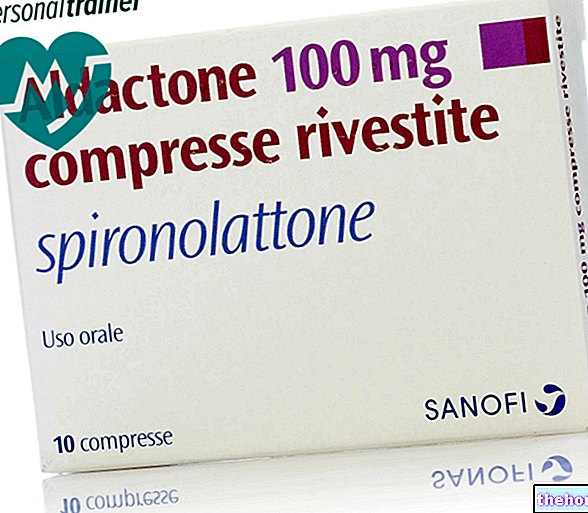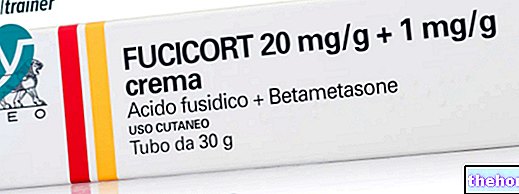Active ingredients: Finasteride
PROPECIA 1 mg film-coated tablets
Why is Propecia used? What is it for?
Propecia is for use in men only and should not be taken by women or children.
Propecia contains a drug called finasteride.
Propecia is used for the treatment of male hair loss (also known as androgenetic alopecia). If you have any questions about hair loss in men after reading this leaflet, ask your doctor.
Male hair loss is a common condition believed to be caused by a combination of genetic factors and a particular hormone called dihydrotestosterone (DHT). DHT helps reduce the hair growth phase and thin the hair.
On the scalp, Propecia specifically decreases DHT levels by blocking an enzyme (5-α reductase type II) that converts testosterone to DHT. Only men with mild to moderate but incomplete hair loss can expect benefits from the use of Propecia. In most men treated with Propecia for 5 years, progression in hair loss has been slowed and at least half of these men he also had some kind of improvement in hair growth.
Contraindications When Propecia should not be used
Do not take Propecia if:
- you are a woman (because this medicine is for men, see Pregnancy). In clinical studies it has been shown that Propecia does not work in women with hair loss
- you are allergic (hypersensitive) to finasteride or to any of the other ingredients (listed in section 6). If you are unsure, ask your doctor or pharmacist.
Precautions for use What you need to know before taking Propecia
Take special care with Propecia
- Propecia should not be taken by children.
- Tell your doctor or pharmacist if you have or have had any medical problems and give information about any allergies.
Interactions Which drugs or foods can modify the effect of Propecia
Taking Propecia with other medicines
Propecia can usually be taken with other medicines. Tell your doctor or pharmacist if you are taking or have recently taken any other medicines, including medicines without a prescription.
Taking Propecia with food and drink
You can take Propecia with or without food.
Warnings It is important to know that:
Pregnancy
Propecia is used for the treatment of male hair loss in men only.
- Women should not use Propecia due to the risk in pregnancy.
- If you are pregnant or potentially pregnant, do not touch crumbled or broken Propecia tablets.
- If the active ingredient in Propecia is absorbed after oral use or through the skin by a woman who is pregnant with a male child, this can cause the male child to be born with abnormalities of the sexual organs.
- If a woman who is pregnant comes into contact with the active ingredient in Propecia she should consult a doctor.
- Propecia tablets are coated in order to prevent contact with the active ingredient during normal use.
Ask your doctor or pharmacist for advice if you have any questions.
Driving and using machines
There are no data indicating that Propecia alters your ability to drive or use machines.
Important information about some of the ingredients of Propecia
Propecia contains lactose, which is a type of sugar. If you have been told by your doctor that you have an intolerance to some sugars, contact your doctor before taking this medicinal product.
Dose, Method and Time of Administration How to use Propecia: Posology
Always take Propecia exactly as your doctor has told you. If in doubt, you should consult your doctor or pharmacist.
Taking this medicine
- The usual dose is one tablet per day.
- The tablets can be taken with or without food.
- Propecia does not work faster or better if taken more than once a day.
Your doctor can help you assess whether Propecia is effective for you. It is important to take Propecia for the period set by your doctor. Propecia can only work in the long term if used continuously.
Overdose What to do if you have taken too much Propecia
If you take more Propecia than you should
If you take too many tablets by mistake, contact your doctor immediately.
If you forget to take Propecia
- If you forget to take a dose, skip the missed dose.
- Take the next dose as usual.
- Do not take a double dose to make up for a forgotten dose.
If you stop taking Propecia
It may take between 3 and 6 months for the full effect to develop. It is important that you take Propecia as long as your doctor tells you to. If you stop taking Propecia it is likely that you will lose your hair. regrown over a period of time between 9 and 12 months.
If you have any further questions on the use of Propecia, ask your doctor or pharmacist.
Side Effects What are the side effects of Propecia
Like all medicines, Propecia can cause side effects, although not everybody gets them.
Undesirable effects were generally temporary with continued treatment or resolved upon discontinuation of treatment.
Uncommon (affects less than 1 in 100 patients):
- decreased sexual desire
- difficulty in achieving an erection
- problems with ejaculation such as a reduction in the amount of semen released
- depressed mood.
Frequency not known:
- allergic reactions such as rash, itching, swelling under your skin (hives) and angioedema (including swelling of the lips, tongue, throat and face)
- swelling or tenderness of the breast
- pain in the testicles
- rapid heartbeat
- persistent difficulty getting an erection after stopping treatment
- persistent reduction in sex drive after stopping treatment
- persistent ejaculation problems after stopping treatment
- Infertility has been reported in men who took finasteride for a long time and had other risk factors that can affect fertility. Normalization or improvement in semen quality has been reported after discontinuation of finasteride. Long-term clinical studies on the effects of finasteride on fertility have not been conducted in humans.
- elevated liver enzymes
You must immediately report any changes in breast tissue such as swelling, pain, enlargement of breast tissue or nipple discharge to your doctor immediately as these changes may be signs of a serious condition, such as breast cancer.
Stop taking Propecia and speak to your doctor immediately if you have any of the following symptoms:
- swelling of your face, tongue or throat
- difficulty swallowing
- lumps under your skin (hives)
- difficulty in breathing.
If any of the side effects gets serious, or if you notice any side effects not listed in this leaflet, please tell your doctor or pharmacist.
Expiry and Retention
Keep out of the reach and sight of children.
This medicine does not require any special storage conditions.
Do not use Propecia after the expiry date which is stated on the carton after "EXP". The first two numbers indicate the month; the last four numbers indicate the year. The expiry date refers to the last day of the month.
Medicines should not be disposed of via wastewater or household waste. Ask your pharmacist how to throw away medicines you no longer use. This will help protect the environment.
Composition and pharmaceutical form
What Propecia contains
- The active ingredient in Propecia tablets is finasteride. Each tablet contains 1 mg of finasteride.
- The other excipients are:
Tablet contents: Lactose monohydrate 110.4 mg, microcrystalline cellulose, pregelatinised maize starch, sodium starch glycolate, sodium docusate, magnesium stearate.
Coating: Talc, hypromellose, hydroxypropylcellulose, titanium dioxide (color E171), yellow iron oxide and red iron oxide (color E172).
Description of what Propecia looks like and contents of the pack
- Propecia film-coated tablets are supplied in blister packs.
- The tablets are film-coated, convex, reddish brown, octagonal, debossed with "P" on one side and "PROPECIA" on the other side.
- Pack sizes: 7, 28, 30, 84 or 98 tablets.
- Not all pack sizes may be marketed.
Source Package Leaflet: AIFA (Italian Medicines Agency). Content published in January 2016. The information present may not be up-to-date.
To have access to the most up-to-date version, it is advisable to access the AIFA (Italian Medicines Agency) website. Disclaimer and useful information.
01.0 NAME OF THE MEDICINAL PRODUCT
PROPECIA 1 MG TABLETS COATED WITH FILM
02.0 QUALITATIVE AND QUANTITATIVE COMPOSITION
Each tablet contains 1 mg of finasteride. Each tablet contains 110.4 mg of lactose monohydrate. This medicinal product contains less than 1 mmol sodium per tablet.
For the full list of excipients, see section 6.1.
03.0 PHARMACEUTICAL FORM
Film-coated tablets.
Maroon, octagonal, convex, film-coated tablet engraved with the logo "P" on one side and "PROPECIA" on the other side.
04.0 CLINICAL INFORMATION
04.1 Therapeutic indications
Early states of androgenetic alopecia in men. PROPECIA stabilizes the process of androgenetic alopecia in men aged between 18 and 41 years. Efficacy in bitemporal recession and end-stage hair loss has not been established.
04.2 Posology and method of administration
One tablet (1 mg) / day with or without meals.
There is no evidence that an increase in dosage results in an increase in efficacy.
The efficacy and duration of treatment should be continuously evaluated by the treating physician. Generally, three to six months of once-a-day treatment is required before a stabilization of hair loss can be expected. continued use recommended. If treatment is stopped, the beneficial effects begin to subside in 6 months and return to baseline in 9-12 months.
No dosage adjustment is necessary in patients with renal insufficiency.
04.3 Contraindications
Contraindicated in women: see 4.6 Pregnancy and lactation and 5.1 Pharmacodynamic properties.
Hypersensitivity to finasteride or to any of the excipients.
04.4 Special warnings and appropriate precautions for use
PROPECIA should not be used in children. There are no data demonstrating efficacy or safety of finasteride in children below 18 years of age.
In clinical trials with PROPECIA in men aged 18 to 41 years, the mean serum prostate specific antigen (PSA) decreased from 0.7 ng / mL, baseline, to 0.5 ng / mL, at 12th month Before evaluating the result of this analysis, in men receiving PROPECIA, it is necessary to consider doubling the PSA values.
Long-term data on fertility in humans are missing and specific studies in low-fertile men have not been conducted. Male patients planning to become fathers were initially excluded from clinical trials. Although animal studies have shown no adverse effects relevant to fertility, spontaneous reports of infertility and / or poor-quality semen have been received post-marketing. In some of these reports, patients had other risk factors that may have contributed to infertility. Normalization or improvement in semen quality has been reported after discontinuation of finasteride.
The effect of hepatic impairment on finasteride pharmacokinetics has not been studied.
Breast cancer has been reported in men taking 1 mg finasteride during the post-marketing period. Physicians should instruct their patients to promptly report any changes in breast tissue such as swelling, pain, gynaecomastia or nipple discharge.
Patients with rare hereditary problems of galactose intolerance, the Lapp-lactase deficiency or glucose-galactose malabsorption should not take this medicine.
04.5 Interactions with other medicinal products and other forms of interaction
Finasteride is metabolised essentially via the cytochrome P450 3A4 system, but does not interfere with its "activity". Although a low risk of finasteride modifying the pharmacokinetics of other drugs has been estimated, it is likely that inhibitors and inducers of cytochrome P450 3A4 will alter the plasma concentrations of finasteride. However, based on established safety margins, any increase due to concomitant use of these inhibitors is unlikely to be of clinical relevance.
04.6 Pregnancy and lactation
Pregnancy:
The use of PROPECIA is contraindicated in women due to the risk of pregnancy. Given the ability of finasteride to inhibit the conversion of testosterone to dihydrotestosterone (DHT), if administered to a pregnant woman PROPECIA can cause malformations of the external genitalia of the fetus, in if you are male (see 6.6 Special precautions for disposal and other handling).
Feeding time:
It is not known whether finasteride is excreted in human milk.
04.7 Effects on ability to drive and use machines
There are no data suggesting that PROPECIA affects the ability to drive or use machines.
04.8 Undesirable effects
Adverse reactions reported during clinical trials and / or post-marketing use are listed in the table below.
The frequency of adverse reactions is classified as follows:
very common (≥ 1/10); common (≥ 1/100,
The frequency of adverse reactions reported in post-marketing use cannot be estimated as they come from spontaneous reports.
* Incidences presented as differences from placebo in clinical trials at month 12.
** See section 4.4
† This adverse reaction was identified through post-marketing surveillance but the incidence in randomized, controlled Phase III clinical trials (Protocols 087, 089, and 092) was not different between finasteride and placebo.
Sexual drug-related undesirable effects were more common among finasteride-treated men than placebo-treated men with frequencies during the first 12 months of 3.8% vs 2.1%, respectively. The incidence of these effects decreased to 0.6% in finasteride-treated men over the next four years. Approximately 1% of men in each treatment group discontinued therapy due to related sexual adverse experiences. with the medicine occurred in the first 12 months and the incidence decreased thereafter.
In addition, persistent sexual dysfunction (decreased libido, erectile dysfunction and ejaculation disturbances) after discontinuation of PROPECIA treatment have been reported during post-marketing use; breast cancer in men (see 4.4 Special warnings and precautions for use).
04.9 Overdose
In clinical studies, single doses of finasteride up to 400 mg and multiple doses of finasteride up to 80 mg / day for three months (n = 71) resulted in no dose-related undesirable effects.
No specific treatment is recommended in case of overdose with PROPECIA.
05.0 PHARMACOLOGICAL PROPERTIES
05.1 Pharmacodynamic properties
ATC code: D11A X10.
Finasteride is a 4-azasteroid compound, which inhibits human Type 2 5a-reductase (present in hair follicles) with more than 100 times greater selectivity than human Type 1 5a-reductase and blocks the peripheral conversion of testosterone into "androgen dihydrotestosterone (DHT). In men with male pattern hair loss, the hairless scalp has miniaturized hair follicles and increased amounts of DHT. Finasteride inhibits a process responsible for miniaturizing the hair follicles of the scalp, which it can make the process of baldness reversible.
Studies in men:
The efficacy of PROPECIA was demonstrated in three studies involving 1,879 men between the ages of 18 and 41 with mild to moderate but incomplete vertex hair loss and mid / frontal hair loss. . In these studies, hair growth was assessed using four different variables including hair count, classification of photographic reproductions of the head by dermatologists on a panel of experts, evaluation by researchers and self-evaluation of patients. .
In two studies in men with vertex hair loss, PROPECIA treatment continued for 5 years, during which time patients showed improvement in time from month 3 to month 6 from both baseline and placebo. . While the parameters of hair improvement from baseline in men treated with PROPECIA generally peaked in the second year and gradually declined thereafter (e.g. hair counts in a representative sample area of 5.1 cm2 increased by 88 hairs from baseline to 2 years and 38 hairs from baseline to 5 years), hair loss in the placebo group progressively worsened compared to baseline (decrease of 50 hairs at two years and 239 hairs at 5 years). Therefore, although the improvement from baseline in PROPECIA-treated men did not increase further after the second year, the difference between treatment groups continued to increase over the entire five-year study. Treatment with PROPECIA for 5 years continued to increase. stabilized hair loss in 90% of men based on photographic image assessment and in 93% based on researchers' assessment. In addition, increased hair growth was observed in 65% of men treated with PROPECIA on based on hair counts, in 48% based on the evaluation of photographic images and in 77% based on the evaluation of the researchers.In contrast, in the placebo group, gradual hair loss over time was observed in 100% of men based on hair counts, in 75% based on photographic image assessment, and in 38% based on investigator assessment. In addition, patient self-assessment demonstrated significant increases in hair density, decreased hair loss and improved hair appearance after treatment with PROPECIA for more than 5 years (see table below).
Percentage of patients improved for each of the 4 parameters evaluated
† Randomization 1: 1 PROPECIA vs placebo
†† 9: 1 PROPECIA randomization vs placebo
In a 12-month study of men with mid / frontal hair loss, hair counts were obtained in a representative area of 1 cm2 (approximately 1/5 of the sample area in vertex studies). Hair counts for a standardized area of 5.1 cm2 increased by 49 hairs (5%) compared to baseline and by 59 hairs (6%) compared to placebo. This study also demonstrated significant improvement in patient self-assessment, researcher assessment, and scoring of photographs of the head by a panel of expert dermatologists.
Two studies lasting 12 and 24 weeks showed that a dose 5 times the recommended dose (finasteride 5 mg / day) produced a median reduction in ejaculate volume of approximately 0.5 ml (-25%) compared with placebo. This reduction was reversible after discontinuation of treatment. In a 48-week study, finasteride, at a dose of 1 mg / day, produced a median reduction in ejaculate volume of 0.3 ml (-11 %) compared with a reduction of 0.2 ml (-8%) in placebo. No effects on sperm count, motility or morphology were observed. No data for longer periods are available. It was not possible to undertake clinical studies, which could directly clarify the possible negative effects on fertility. However, such effects are considered very unlikely (see also 5.3 Preclinical safety data).
Studies in women:
A lack of efficacy has been shown in postmenopausal women with androgenetic alopecia treated with 1 mg of finasteride for 12 months.
05.2 Pharmacokinetic properties
Bioavailability:
The bioavailability of finasteride after oral administration is approximately 80% and is unaffected by food. Maximum plasma concentrations of finasteride are reached approximately 2 hours after dosing and absorption is complete after 6-8 hours.
Distribution:
The protein binding is about 93%. The volume of distribution is approximately 76 liters (44-96 liters). After a dose of 1 mg / day, the maximum plasma concentration of finasteride at steady state averaged 9.2 ng / ml and was reached 1-2 hours post dose; the AUC (0-24 hours) was 53 ng x hour / ml.
Finasteride has been detected in CSF, but the drug does not appear to preferentially concentrate in CSF. A very small amount of finasteride was also detected in the semen of subjects treated with finasteride. Studies in rhesus monkeys have shown that this amount is not considered to pose a risk to the developing male fetus (see 4.6 Pregnancy and lactation and 5.3 Preclinical safety data).
Biotransformation:
Finasteride is metabolised primarily by the cytochrome P450 3A4 system without affecting its "activity". In humans, after an oral dose of 14C-finasteride, two metabolites of finasteride were identified which, in relation to the latter, have only a small inhibitory activity on the 5a-reductase.
Elimination:
In humans, following an oral dose of 14C-finasteride, approximately 39% (32-46%) of the dose was excreted in the urine as metabolites. Virtually no unchanged drug was excreted in the urine and 57% (51-64%) of the total dose was excreted in the faeces.
Plasma clearance is approximately 165 mL / min (70-279 mL / min).
The rate of elimination of finasteride decreases slightly with age. The mean terminal plasma half-life is approximately 5-6 hours (3-14 hours) [8 hours (6-15 hours) in men over 70 years of age. age]. These findings have no clinical significance and, therefore, a reduction in dosage in the elderly is not warranted.
Hepatic insufficiency:
The effect of hepatic impairment on finasteride pharmacokinetics has not been studied.
Kidney failure:
In chronic renal impairment patients with creatinine clearance ranging from 9 to 55 mL / min, the area under the curve, maximum plasma concentrations, half-life and protein binding of unchanged finasteride after a single dose of 14C-labeled finasteride, were similar to the values obtained in healthy volunteers.
05.3 Preclinical safety data
Mutagenicity / Carcinogenicity
Studies on genotoxicity and carcinogenicity did not reveal any risk for humans.
Disturbing effect on reproduction including fertility
Effects on embryonic and fetal development were studied in rats, rabbits and rhesus monkeys. In rats treated with 5-5,000 times the clinical dose, occurrence of hypospadias was observed in a dose-related manner in male fetuses. Even in rhesus monkeys, treatment with oral doses of 2 mg / kg / day resulted in abnormalities of the external genitalia. In rhesus monkeys intravenous doses up to 800 ng / day have shown no effect in male fetuses. This represents an exposure to finasteride 750 times at least higher than the maximum estimated in pregnant women from semen exposure of men taking 1 mg / day (see 5.2 Pharmacokinetic properties). In the rabbit study, fetuses were not exposed to finasteride during the critical period for genital development.
In rabbits, after treatment with 80 mg / kg / day, a dose which in other studies has shown to have a pronounced effect on reducing the weight of accessory sex glands, neither ejaculate volume, sperm count nor fertility are altered results In rats treated for 6 and 12 weeks with 80 mg / kg / day (approximately 500 times the clinical exposure) no effects on fertility were observed. After 24-30 weeks of treatment, some reduction in fertility and a pronounced reduction in the weight of the prostate and seminal vesicles were observed. All changes were reversible within a 6-week period. The reduced fertility was shown to be due to deterioration of sperm swab formation, an effect that has no relevance to humans. The development of the infants and their reproductive capacity in the age of sexual maturation were without comment. No effect was observed on numerous fertility parameters after insemination of female rats with epididymal sperm from rats treated for 36 weeks with 80 mg / kg / day.
06.0 PHARMACEUTICAL INFORMATION
06.1 Excipients
Tablet Content:
Lactose monohydrate, microcrystalline cellulose, pregelatinised maize starch, sodium starch glycolate, sodium docusate, magnesium stearate.
Compressed coating:
Talc, hypromellose, hydroxypropylcellulose, titanium dioxide (color E171), yellow iron oxide and red iron oxide (color E172).
06.2 Incompatibility
Not applicable.
06.3 Period of validity
3 years.
06.4 Special precautions for storage
No special precautions are required.
06.5 Nature of the immediate packaging and contents of the package
7 tablets (1 x 7; PVC / aluminum blister)
28 tablets (4 x 7; PVC / aluminum blister)
30 tablets (3 x 10; PVC / aluminum blister)
84 tablets (12 x 7; PVC / aluminum blister)
98 tablets (14 x 7; PVC / aluminum blister)
Not all pack sizes may be marketed.
06.6 Instructions for use and handling
Women who are or may potentially be pregnant should not come into contact with crushed or broken PROPECIA tablets due to possible absorption of finasteride and the resulting potential risk to the male fetus (see 4.6 Pregnancy and lactation). PROPECIA tablets have a coating that prevents contact with the active ingredient during normal handling, as long as the tablets are not broken or crushed.
07.0 MARKETING AUTHORIZATION HOLDER
MSD Italia S.r.l.
Via Vitorchiano, 151 - 00189 Rome
08.0 MARKETING AUTHORIZATION NUMBER
7 film-coated tablets n. 034237014
28 film-coated tablets n. 034237026
30 film-coated tablets n. 034237038
84 film-coated tablets n. 034237040
98 film-coated tablets n. 034237053
09.0 DATE OF FIRST AUTHORIZATION OR RENEWAL OF THE AUTHORIZATION
January 1999
10.0 DATE OF REVISION OF THE TEXT
September 2014




























